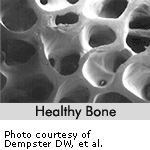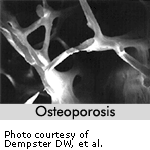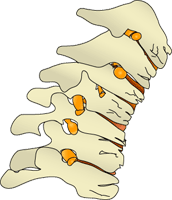 Loading... Please wait...
Loading... Please wait...- Home
- COACH
- Moving Free™
- SHOP
- CLUB
- ART
- FABULOSITY®
- BIO
- CONSULT
- AMAZON
-
Live Long
- Diet & Nutrition
- Easy Exercise Videos Mirabai Holland
- Fitness Longevity
- Fabulous Forever After 50 Mirabai Holland
- Senior Exercise Videos Mirabai Holland
- Baby Boomer Exercise Mirabai Holland
- Beginner Exercise Videos Mirabai Holland
- Moving Free
- Weight Loss
- Cardio
- Strength
- Flexibility
- Body Type
- Stress Reduction
- Medical Care
-
Health
- Exercise and Memory Issues
- Chronic Stress: How To Get Rid Of It
- Exercise & Heart Disease
- Exercise & Diabetes
- Exercise & Autoimmune Diseases
- Osteoporosis
- Exercise for Arthritis
- Back Pain
- Exercise & Orthopedic Issues
- Coping With Cancer
- Pulmonary Asthma
- Exercise And Parkinson's Disease
- Perimenopause & Menopause
- Exercise & Depression
- Sleep Better with Exercise
- BLOG
- Contact
Categories
Our Newsletter
Osteoporosis

WE CAN HELP PREVENT AND MANAGE OASTEOPOROSIS WITH A CALCIUM RICH DIET AND WEIGHT BEARING AND
LEARN MORE ABOUT YOUR BONES AND OATEOPOROSIS BELOW.
Your skeleton has 206 bones to support and protect your body. It makes up about 18% of your body weight. On the outside, bones look solid and rock-like, but they're not. They're living tissue. There is a smooth, hard, outside layer made of cortical bone, and the inside, is a strong, light weight, honeycomb-like structure, called trabecular bone, which contains blood vessels, and bone marrow. The combination of cortical and trabecular bone enables the skeleton to be light, strong, flexible, and efficient.
By about age 30, our bones have grown to their full adult size and density. But activity in our bones is far from over.
Our bodies are constantly remodeling our bones to meet the demands we put on them. Remodeling helps keep bones young and healthy by replacing old or weakened areas with new, well formed tissue. In a cycle that takes about 3 to 4 months, destroyer cells called osteoclasts break down old bone, so that the building cells, the osteoblasts, can replace it with new bone. Adults have about 10 to 15% of their bone replaced each year.
However, as we age, osteoclasts often are more efficient at removing bone than the osteoblasts are at rebuilding bone. This imbalance over time contributes to bone loss.
Osteoporosis is a disease which, over time, causes bones to become thinner, more porous and less able to support the body. Bones can become so thin that they break during normal, every day activity. Osteoporosis is a major health threat. Millions are at risk, 80% are women. If you have family history or risk factors, ask your doctor about a bone density test. You may discover that you have Osteopenia, a condition of low bone mass, which suggests a person may be at risk for osteoporosis. Discuss medical options with your doctor.
In bones with Osteoporosis, the outside hard cortical layer gets thinner, and the honeycombed, trabecular inside becomes more porous. Bone is broken down and little or nothing takes its place.
Here is a cross section of healthy bone and bone with osteoporosis.
![]()

 Usually, there is no pain, and there are no apparent symptoms. Bones can become so thin that they break during normal, every day activity. Most people don't discover they have osteoporosis until a fracture occurs. Fractures occur most often at the spine, hip, and wrist. People with advanced osteoporosis may get multiple compression fractures of the spine, causing the spine to curve and bend forward.
Usually, there is no pain, and there are no apparent symptoms. Bones can become so thin that they break during normal, every day activity. Most people don't discover they have osteoporosis until a fracture occurs. Fractures occur most often at the spine, hip, and wrist. People with advanced osteoporosis may get multiple compression fractures of the spine, causing the spine to curve and bend forward.
This is called kyphosis. But we can prevent and help reverse the effects of osteoporosis by working out our bones.
But we can prevent and help reverse the effects of osteoporosis by working out our bones.
Bones are living tissue and scientific evidence suggests that weight bearing exercise can prevent bone loss and encourage bone growth. A study showed that tennis players, through repeated practice over time, developed thicker bones in their racquet arm than their non-racquet arm. Skeletal Fitness by Mirabai Holland® is a comprehensive bone loading program for the whole body, with special emphasis on the areas at risk for osteoporotic fracture: the spine, thigh bone at the hip, and forearm at the wrist.
Skeletal Fitness by Mirabai Holland® is a comprehensive bone loading program for the whole body, with special emphasis on the areas at risk for osteoporotic fracture: the spine, thigh bone at the hip, and forearm at the wrist.
Remember, it's never too early or too late to start taking care of your bones.



